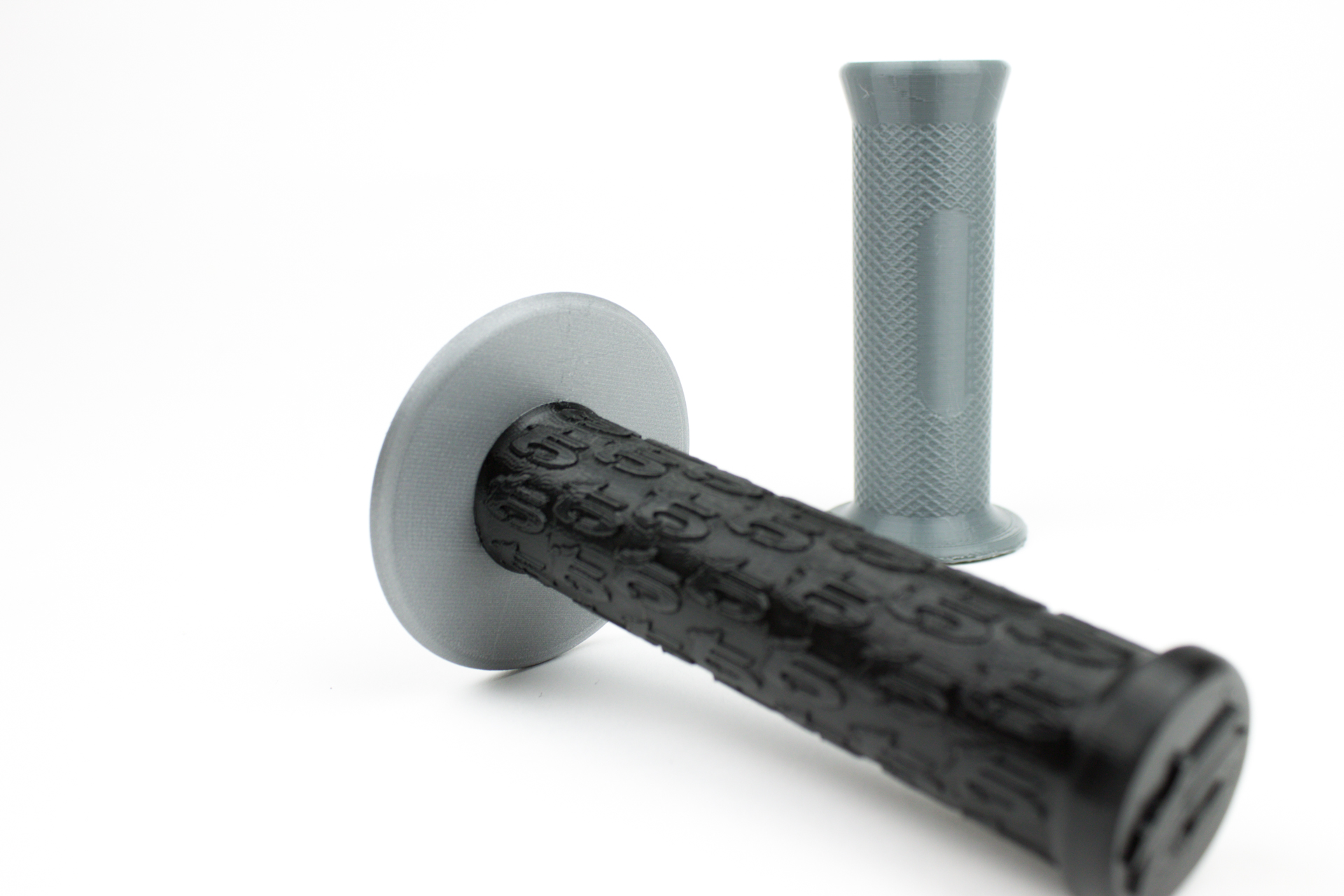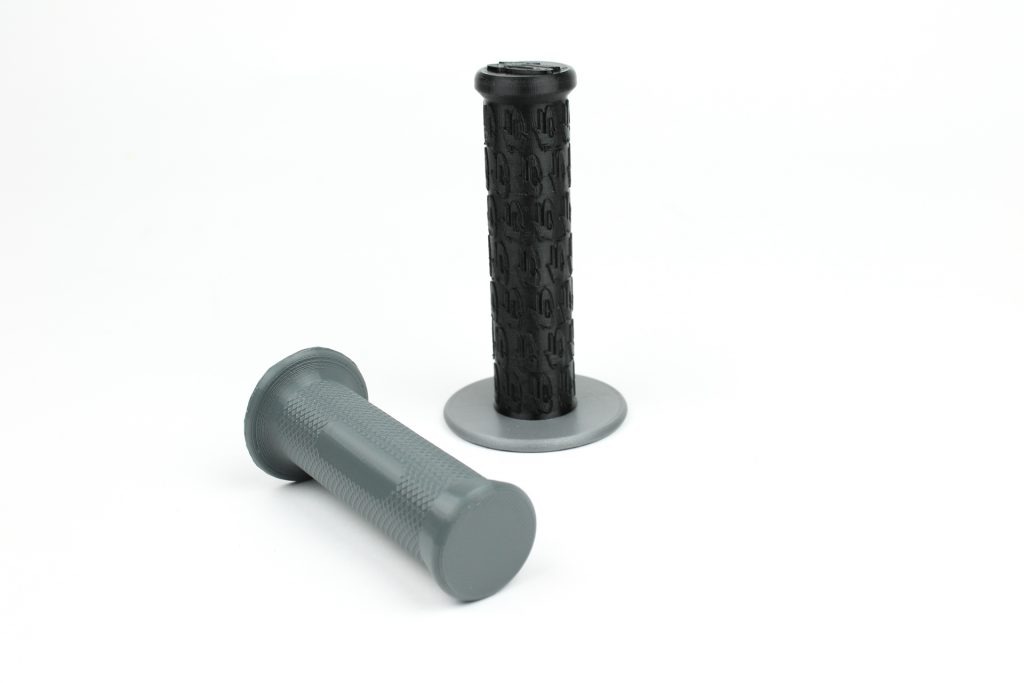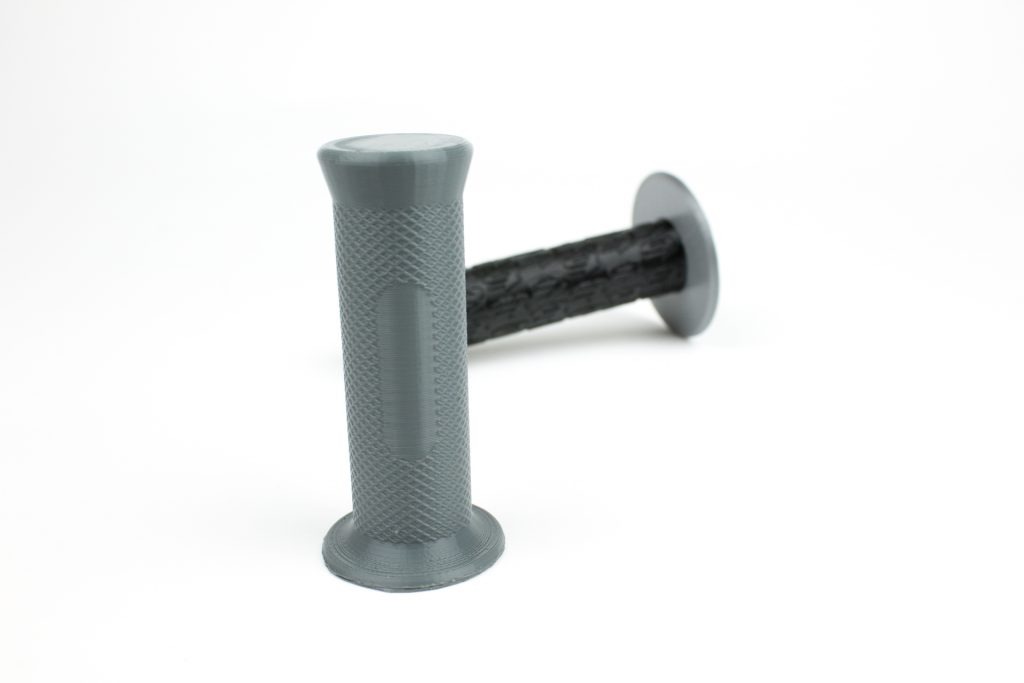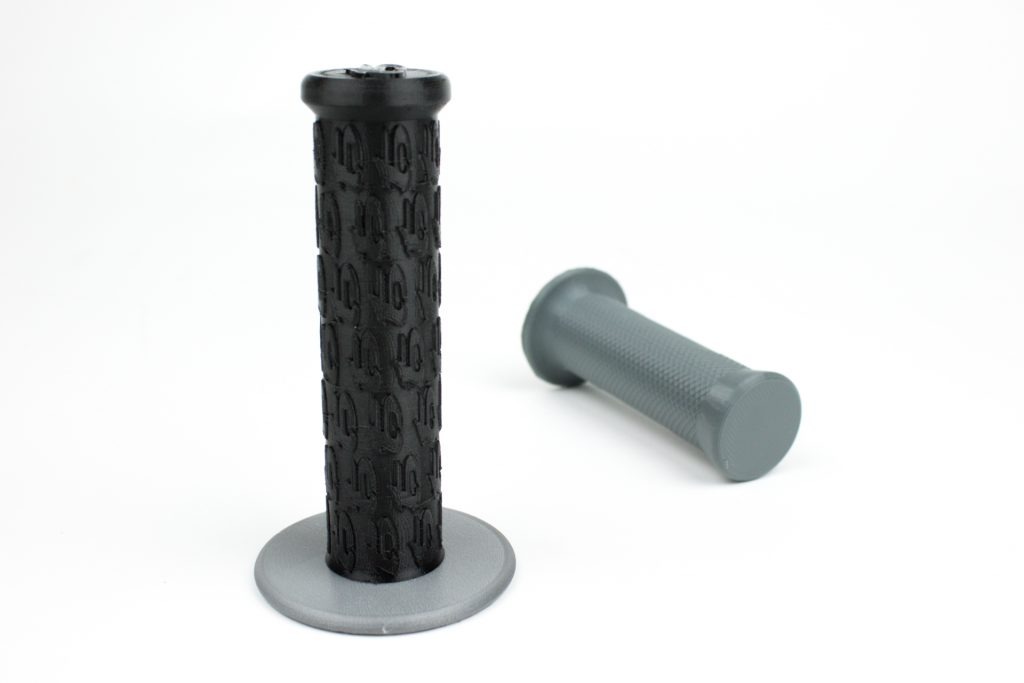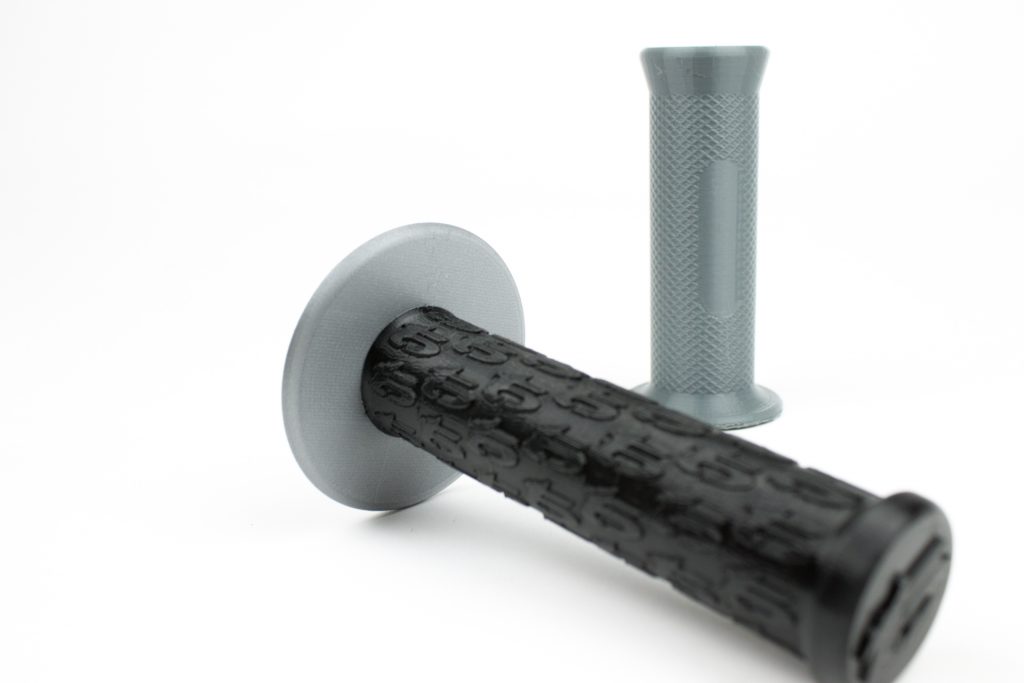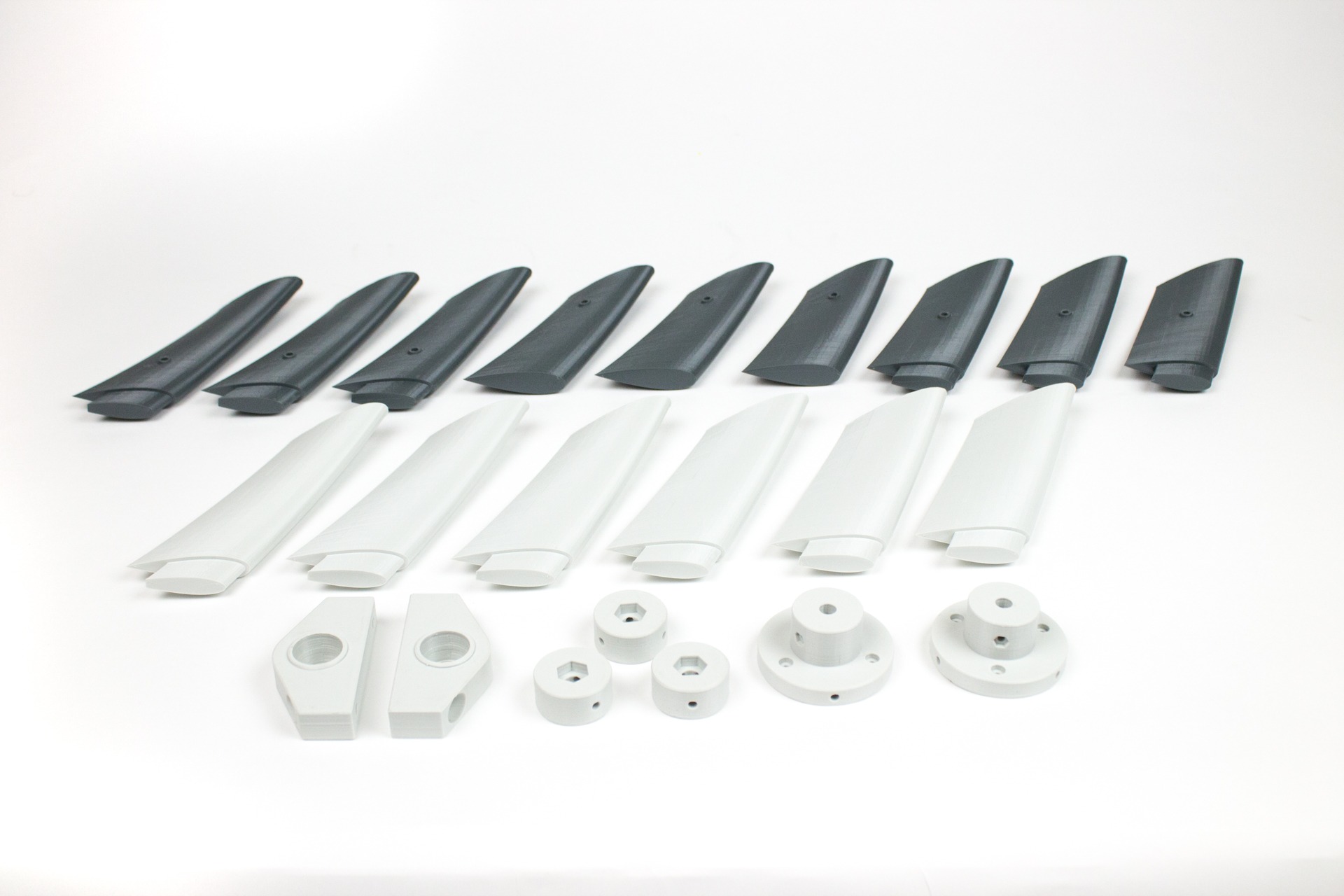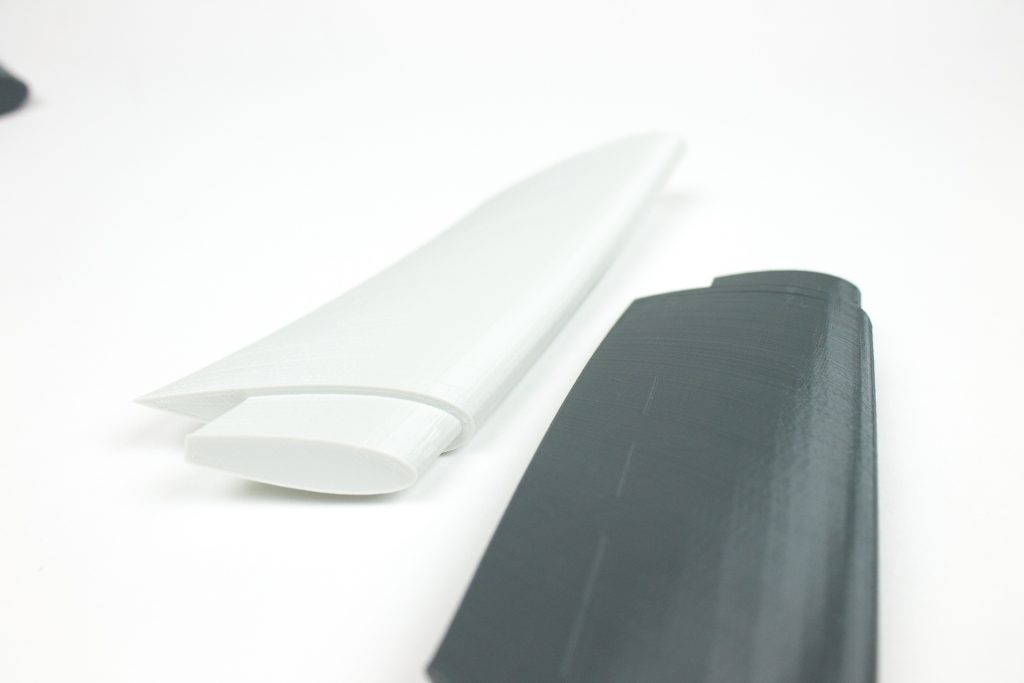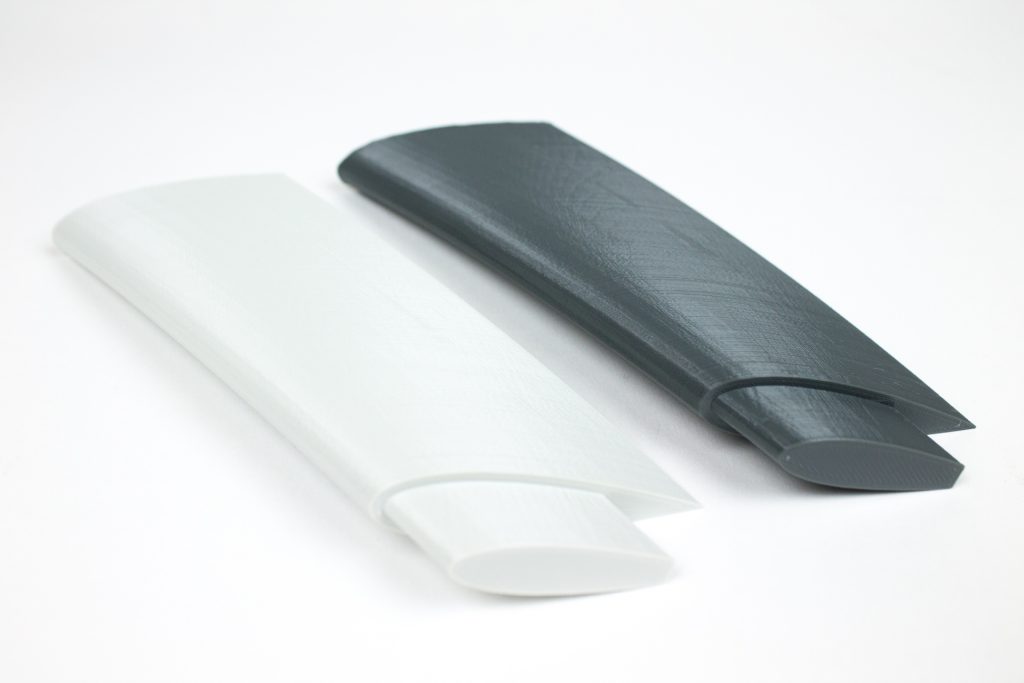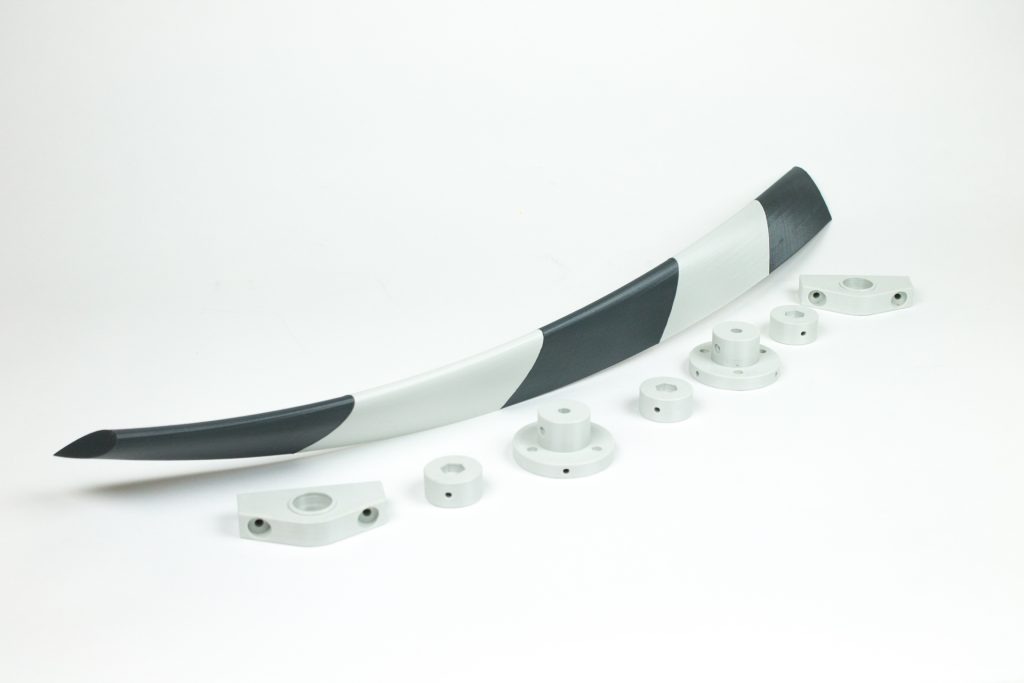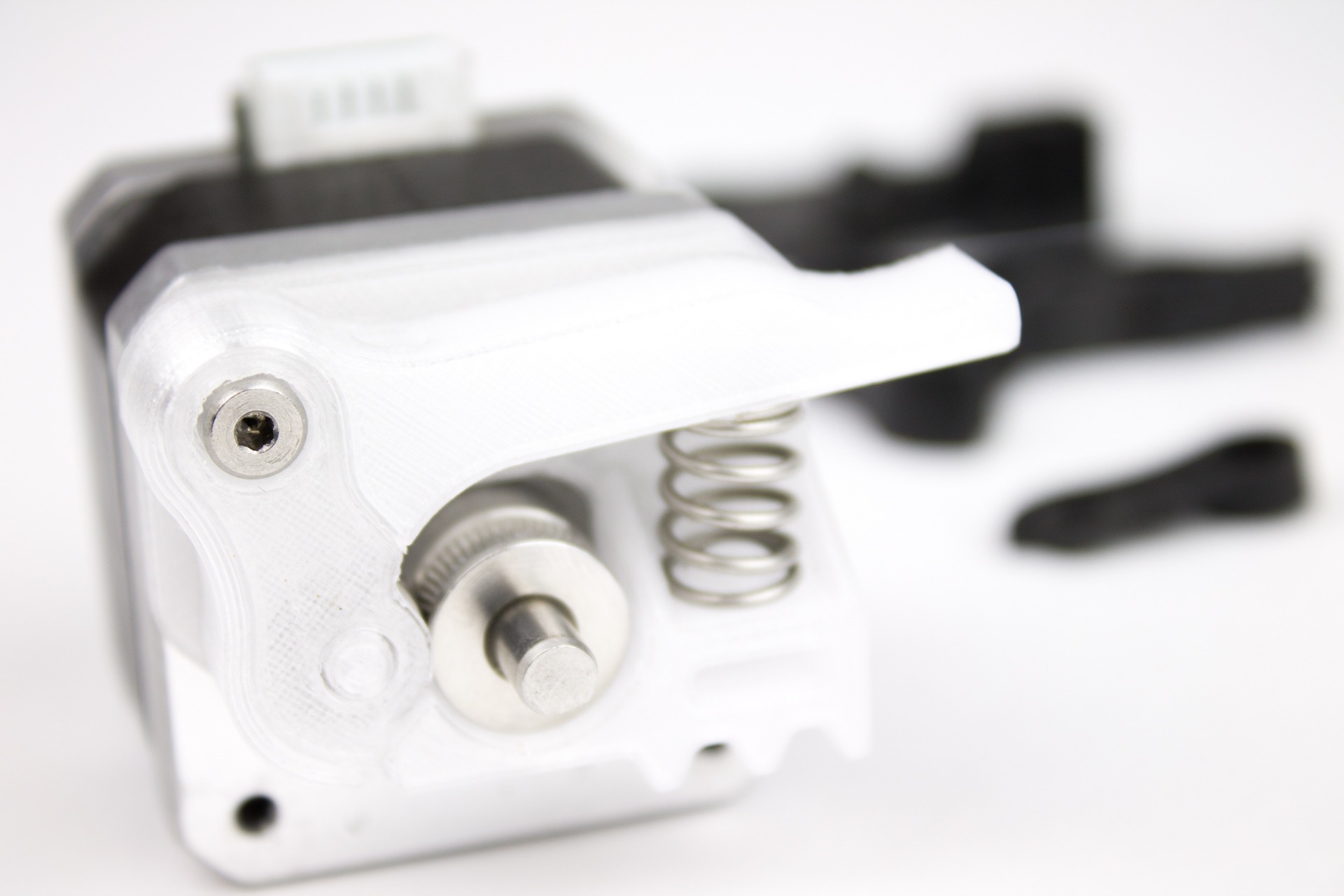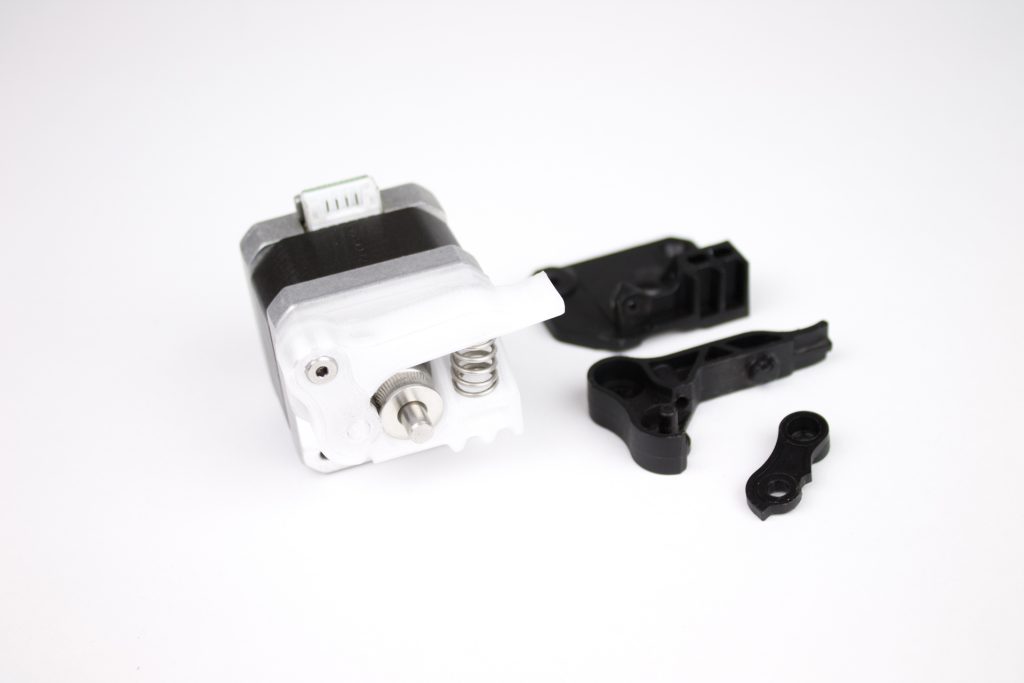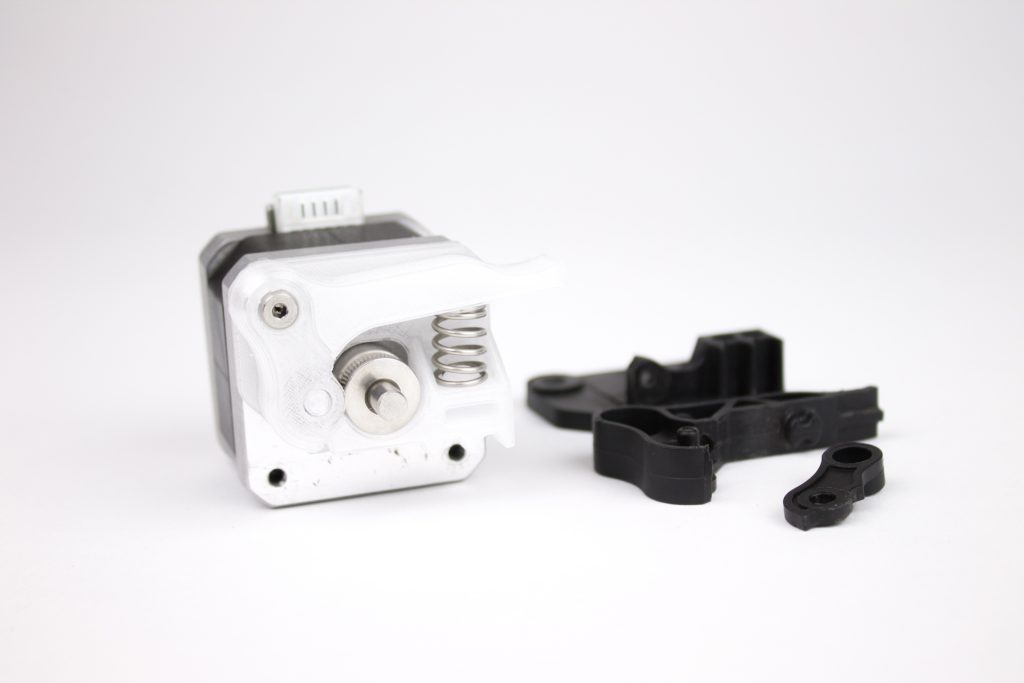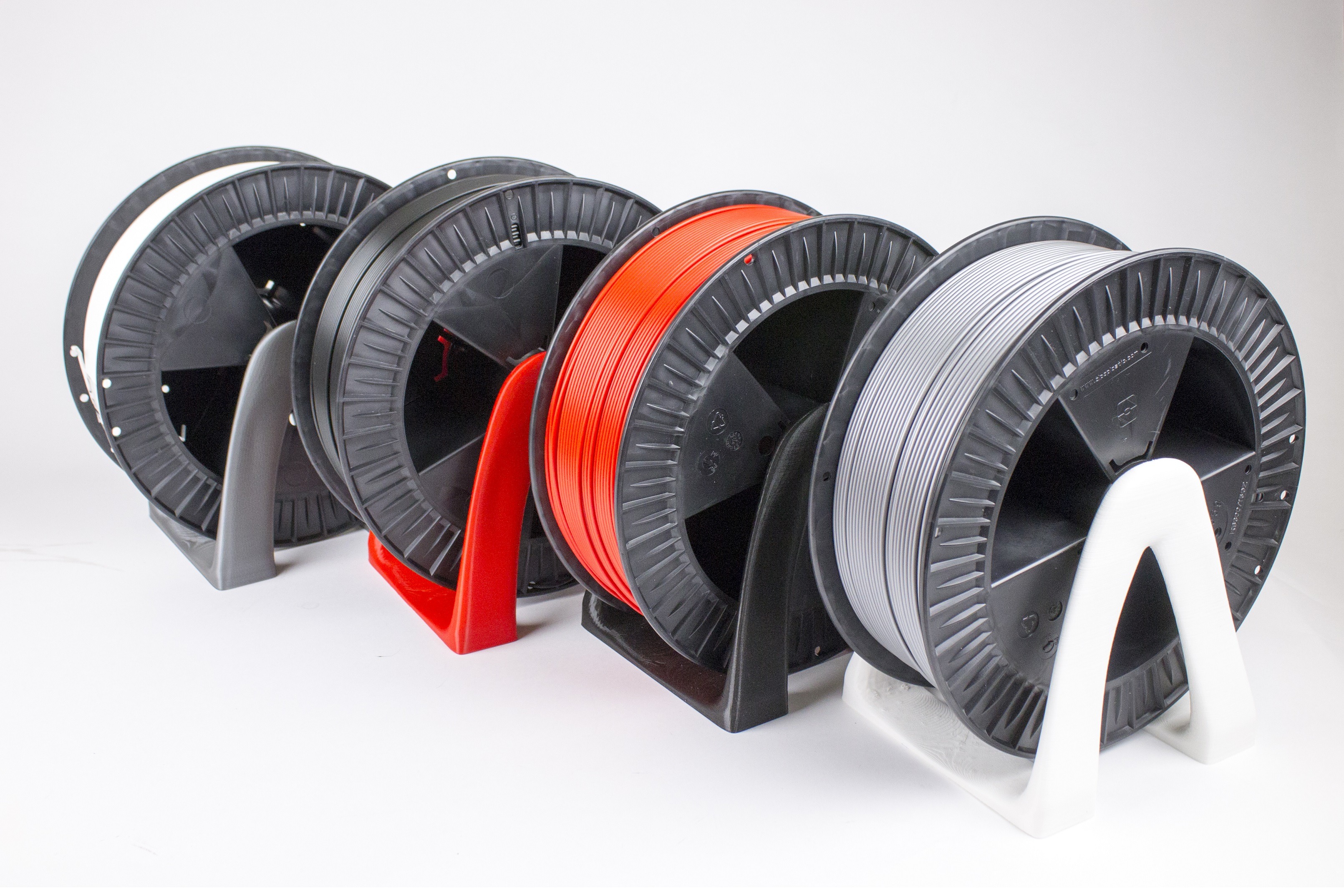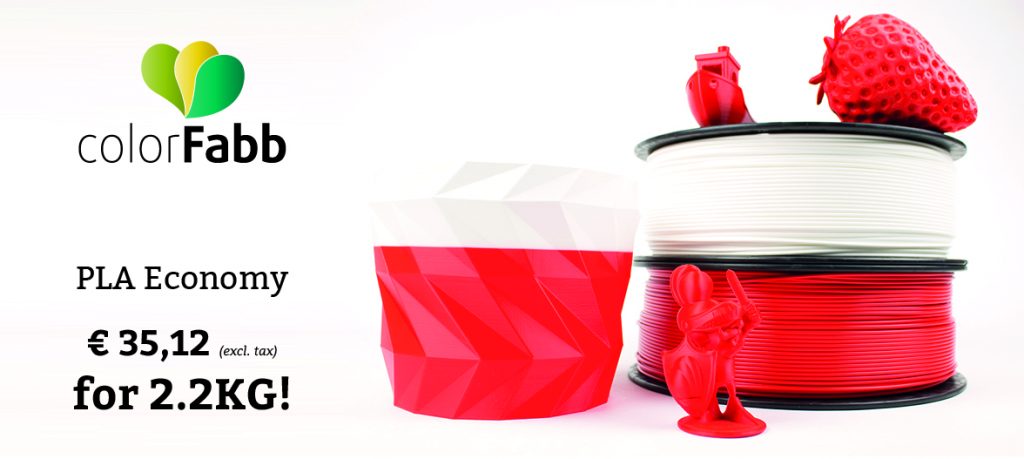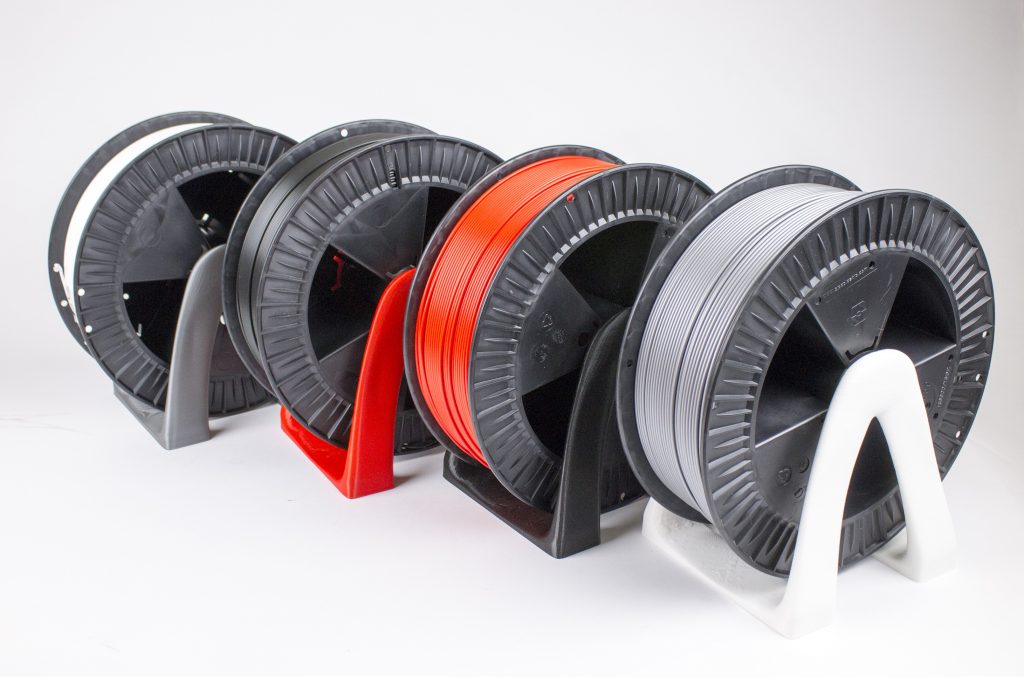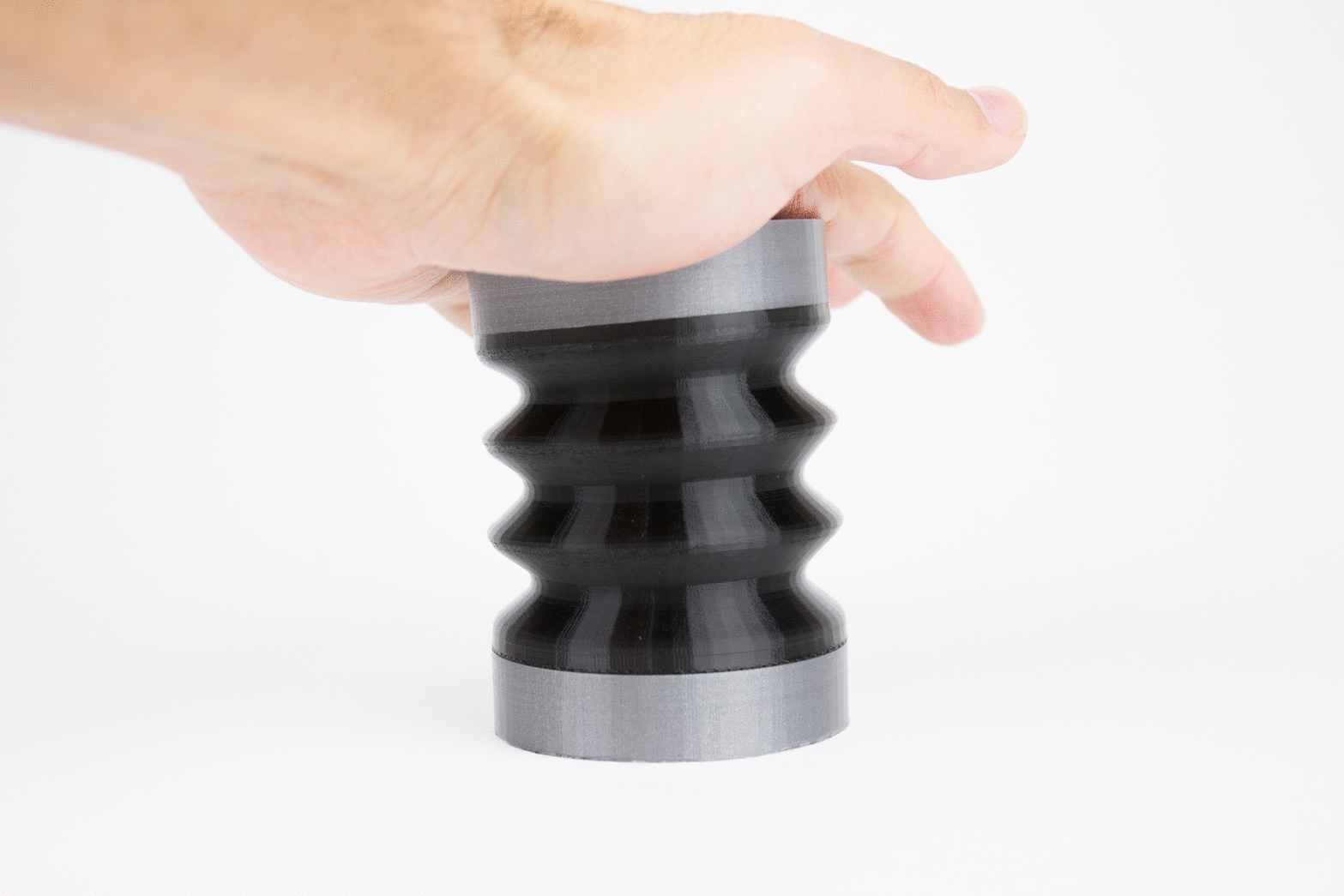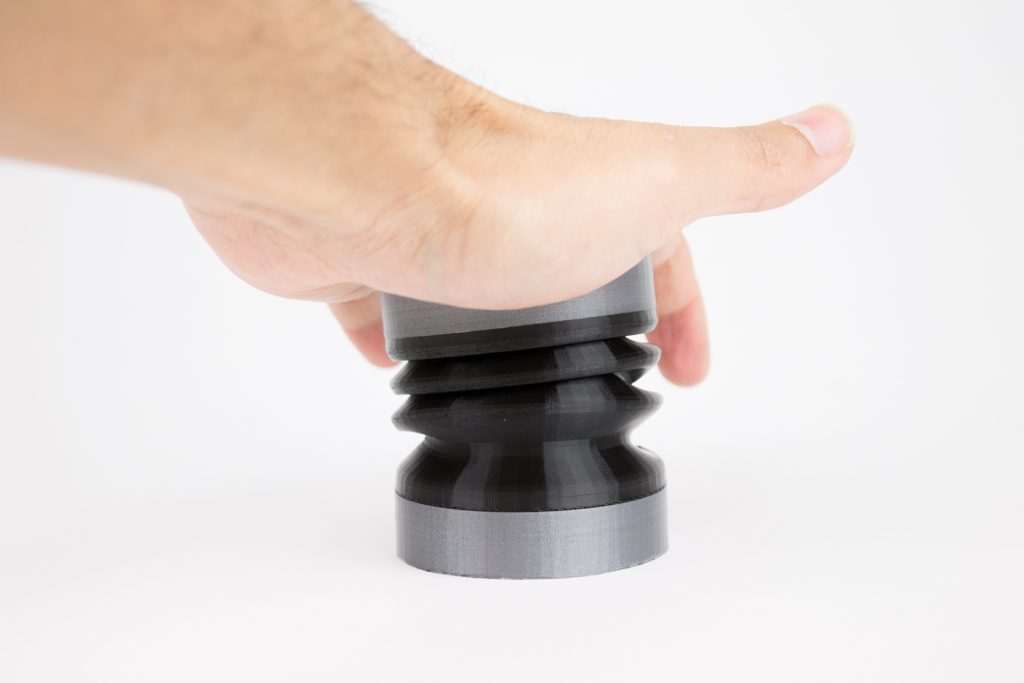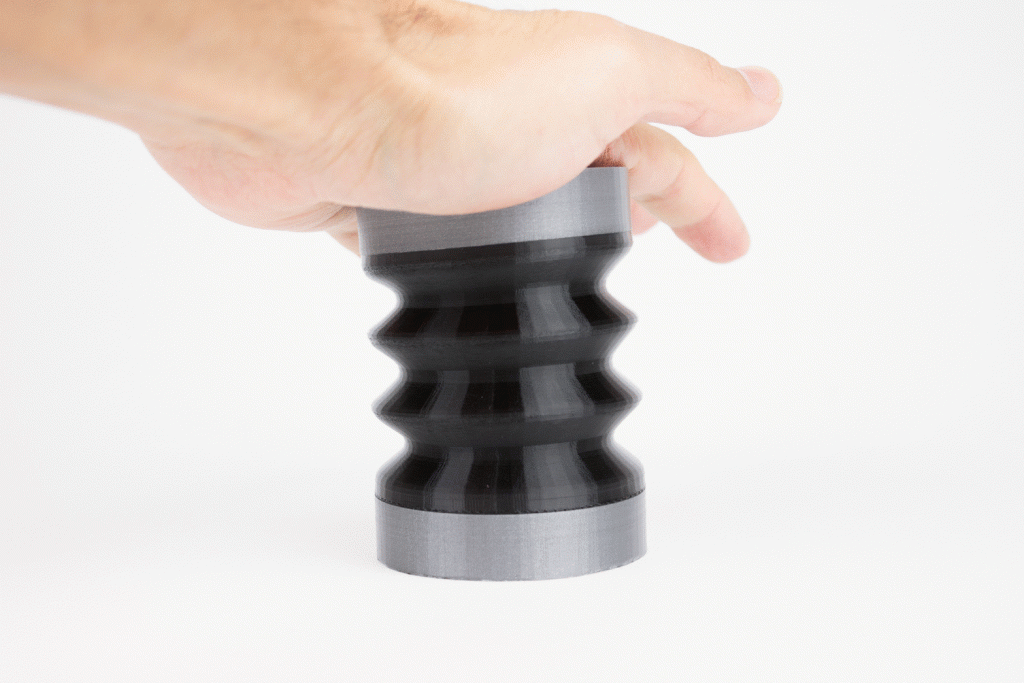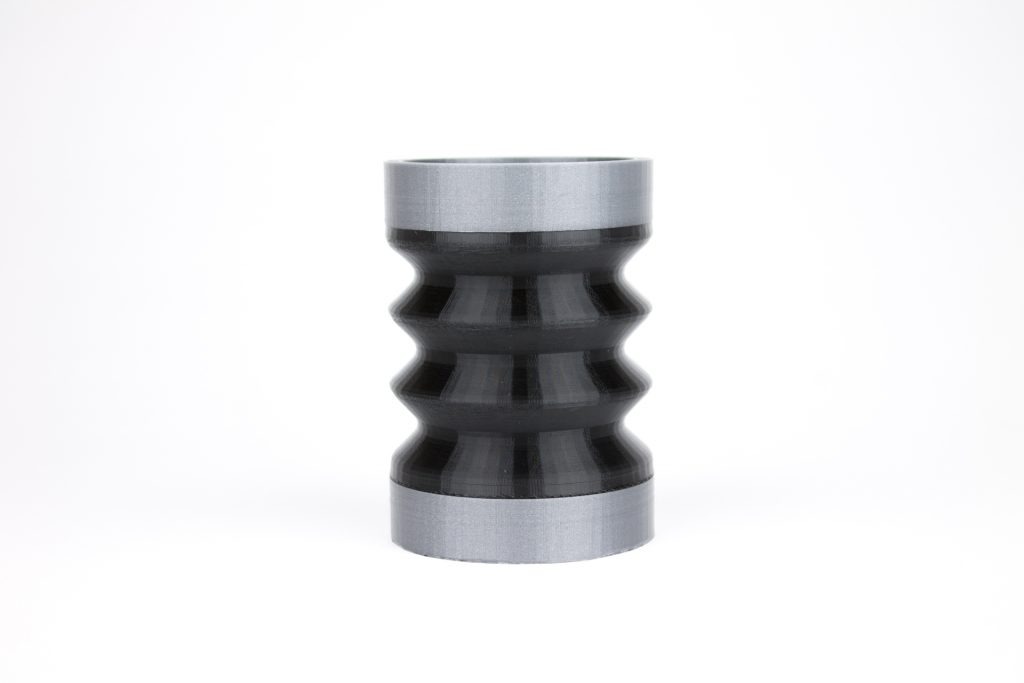If you’re looking for good inspiration for what your next 3D printing project should be, just take a look at Daniel Norée his Youmagine account. We found some really nice handlebar models to demonstrate the use of semi-flexible filaments, such as nGen_FLEX.
We printed two different handlebar grips, one for a BMX bike and another for a 1966 Harley Davidson M50S.
The handlebar grip for the 1966 Harley Davidson M50S was printed on the Mass Portal, with dark gray nGen_FLEX. With a 0.6mm nozzle printing at 0.2mm layerheight this model was printed in no time at all, in just 1 hour and 30 mninutes you’ve got yourself a spare part!
The BMX Handlebar we decided to print on the UM3 and alter the model slightly to make it compatible for dual material extrusion. Using Meshmixer we seperated the bottom plate from the grip part, so we could merge them in Cura 2.3.1 and assign different materials for each part. The flat part is printed in nGen Silver Metallic, at 0.1mm layerheight. The handle is printed nGen_FLEX black, also at 0.1mm layerheight.
About nGen-FLEX
nGen_FLEX was developed with Eastman chemical company. Based on their work with co-polyesters nGen_FLEX makes a very compatible material with other Amphora grade materials.
With just the right amount of flex, nGen_FLEX is best described as a semi flexible material. Still capable of being fed through a Bowden tube and printed at regular PLA speeds.
Fast printing
nGen_FLEX is engineered as a semi-flexible materials which allows most users to print at regular print speeds, cutting down build times compared to other very flexible filaments. Also bowden style 3D printers, 1.75mm and 2.85mm, will be able to push this filament through without much trouble.
Temperature resistance
nGen_FLEX is temperature resistant to about 125C. That means 3D printed objects can be steam sterilized at 121C.
Flexible and tough
Printed in single perimeters and without infill or very little objects will feel quite flexible, but printed with multiple perimeters and more infill objects will be very firm and tough. The material is rated at a shore hardness of 95A.
